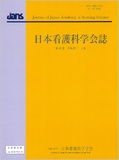Japanese
English
- 販売していません
- Abstract 文献概要
- 参考文献 Reference
要旨
目的:概念分析により臨床における自己調整学習の構造を明らかにする.
方法:42文献を対象にRodgersの概念分析を行った.
結果:属性は構造を示す【3段階の循環するプロセス】,学習プロセスを示す【課題達成に向けた状況分析】【目標設定と方略的計画】【学習機会を臨機応変に活用】【患者ケアに焦点をあてた多様な学習方略の実行】【目標達成状況を内省し目標を洗練する】【専門職としてのアイデンティティの認識】,学習プロセスを支える【メタ認知・動機づけによる学習プロセスの調整】【自分の学習に他者を関与させる】であり,4つの先行要件,3つの帰結を抽出した.
結論:本概念は「臨床における学習機会を臨機応変に活用し,多様な学習方略を用いて目標達成を目指す循環的で継続的な学習プロセスであり,この学習プロセスはメタ認知,動機づけ,他者との相互作用により駆動される」と定義され,臨床での活用可能性が示された.
Objective: To clarify the structure of self-regulated learning in clinical practice through conceptual analysis.
Method: Rodgers's evolutionary concept analysis was applied to 42 literature sources.
Results: The attributes were sorted into nine categories. One of them was a "three-stage cyclic process, " which showed structure. The learning process was characterized by the following: "situation analysis to achieve the task," "goal setting and strategic planning," "resourceful use of learning opportunities," "performing a wide variety of learning strategies focusing on patient care," "refining goals through reflection on goal achievement status," and "recognition of professional identity. " The support for the learning process included "metacognitive and motivational regulation of learning processes" and "engaging others in one's own learning." Four prerequisites and three consequences were identified.
Conclusion: The definition of this concept is a cyclic and continuous learning process that resourcefully uses learning opportunities in clinical practice, performing a wide variety of learning strategies to pursue goal attainment, and is driven by Metacognition, motivation, and interaction with others. The potential for application in clinical settings has been demonstrated.
Copyright © 2023, Japan Academy of Nursing Science. All rights reserved.


